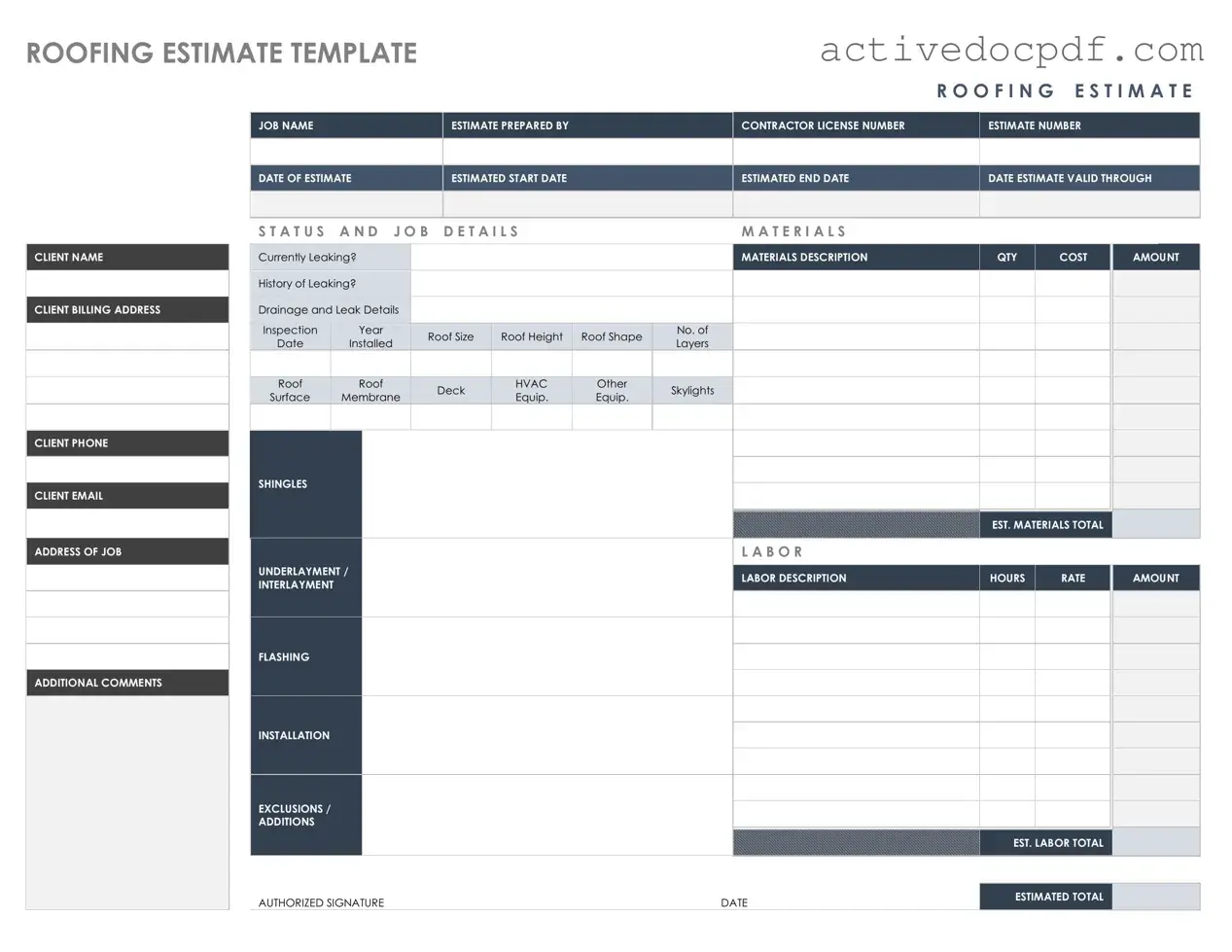Free Roofing Estimate PDF Form
The Roofing Estimate form is a document used to outline the costs and details associated with roofing projects. It serves as a tool for homeowners and contractors to communicate expectations and pricing. Understanding this form can help ensure a smooth roofing process.
Edit Form Online
